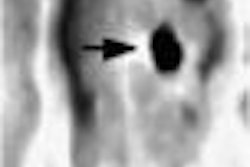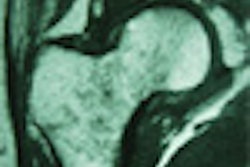Reprising the go-slow show it's famous for, the U.S. Health Care Financing Administration (HCFA) on Tuesday expanded the list of circumstances under which Medicare will pay for PET scans. The new coverage will begin July 1, 2001 for the new indications, many of which were announced last month.
The additions weren't everything nuclear medicine advocates wanted, and vendors had reason to be unhappy too. Once again HCFA declined to expand coverage for the use of gamma cameras that use coincidence detection techniques for PET imaging, leaving their manufacturers and owners in limbo until at least June 19, when the topic will be revisited in an advisory meeting.
The good news is that beginning July 1, 2001, the government will cover PET scans for:
- Diagnosis, staging, and restaging of non-small cell lung cancer (NSCLC).
- Diagnosis, staging, and restaging of colorectal cancer, previously covered for more limited applications.
- Initial staging and restaging of Hodgkins and non-Hodgkins disease.
- Diagnosis, initial staging, and restaging of melanoma, excluding evaluation of regional nodes.
- Usage in head and neck cancers, not including central nervous system or thyroid cancers.
Also moving to simply the claims process, the agency said it will no longer require that paper documentation be submitted up front with PET scan claims. Transmittal AB-01-54, issued by HCFA April 10, stated that "Documentation requirements such as physician referral and medical necessity determination are to be maintained by the provider as part of the beneficiary's medical record."
The requirement that all submitted claims include the PET scan modifiers N, E, P, and S was also dropped.
William Uffelman, public affairs director for the Reston, VA-based Society of Nuclear Medicine, said the changes were good as far as they went.
"We are pleased that HCFA will begin reimbursement for the previously announced expansion of PET coverage to additional indications using dedicated full-ring PET scanners," Uffelman told AuntMinnie.com. "We are disappointed that they have not yet extended this broader coverage to the use of coincidence cameras. We are working with HCFA staff as they continue their evaluation of PET scanning systems."
The status of the ongoing evaluation is covered in a tracking sheet published on HCFA's Web site. HCFA has given itself until May 4, 2001 to complete a new evaluation of gamma camera coincidence systems. The document discusses the agency's research efforts to date, as well as its concerns about the suitability of gamma camera systems for detecting cancer.
"Information collected so far has illustrated a potentially greater gap in system performance than recognized as of 12/15/00, between dedicated PET and gamma camera systems," the document states. "Further, it is clear that no single design specification (i.e. crystal thickness) can differentiate a quality cut-off, but in fact will require some performance-based standard. We are now exploring further the potential patient risks associated with the lower-quality images and/or the greater acquisition time associated with camera PET systems."
However, many nuclear medicine specialists remain convinced that PET scans performed with coincidence cameras provide the same diagnostic information as dedicated full-ring bismuth germanate PET scanners, even if the images themselves are somewhat fuzzier. Several clinical studies have reached the same conclusion.
For now, there's at least an expectation that the agency will soon reach a final decision on coincidence cameras, ending the prolonged confusion endured by their owners and manufacturers. As for covered indications, Uffelman wants to see the broadest possible coverage for PET, and said the government moves too slowly in approving new indications.
"Some days it's disheartening to have to go back and [get approval] one indication at a time, but that's the way the system works," Uffelman said. "The list of things they cover is now very good. Our disappointment is with the current limitation on what PET systems can be used to do the imaging."
By Eric Barnes
AuntMinnie.com staff writer
April 12, 2001
Links
April 10 HCFA Transmittal AB-01-54 (PDF format)
Download Adobe Acrobat (PDF) reader
Related Reading
HCFA broadens Medicare coverage for PET, December 18, 2000
Dedicated PET and hybrid PET are equally accurate for assessing lung cancer, October 25, 2000
SMV wins FDA clearance for Positrace hybrid PET/CT camera, September 4, 2000
Nuclear medicine firm SMV sees bright future for hybrid PET/CT scanning, June 12, 2000
Click here to post your comments about this story. Please include the headline of the article in your message.
Copyright © 2001 AuntMinnie.com




















